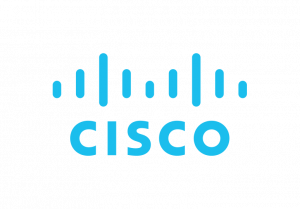The adoption of cloud services in the public sector has accelerated in the past decade, with mandates such as Cloud Smart helping government on its path. The cloud is a critical component of several government initiatives, so why have 80% of the IT decision-makers surveyed in an IDC report migrated applications or data that were part of a public cloud back to an on-premise or private cloud environment? The challenge is the complex interdependencies and infrastructure of cloud.
To realize the true potential and possibility of cloud, agencies must invest in better visibility across workload and data hosting environments. Below are six best practices for improving those two critical areas:
1. Understand your application footprint and map dependencies.
Application discovery is the first step in identifying the full inventory of the applications and components running across your environments. Collecting information about the applications and their interdependencies in the existing environment is critical to understanding if and how an application should be migrated. Dependencies must be mapped from multiple perspectives:
- Customer’s business process mapping (business processes to applications)
- Application-to-server dependency mapping
- Infrastructure physical dependency mapping
- Application transport mapping (flow characteristics over the network)
Correlation of the gathered data provides a holistic view into the complex data center and cloud environment. This understanding gives confidence when planning for migration.
2. Rationalize your applications.
Application rationalization is necessary to identify the best cloud model across all environments, but first agencies must conduct a detailed analysis that assesses the maturity and readiness of each application, based on sound architectural, security, financial and operational requirements. This analysis must also provide an understanding of how using cloud services to deliver an application or a service will affect the mission and the people.
3. Profile to determine what business and mission functions can benefit the most from being hosted in a cloud environment and/or leveraging cloud
services.
Identify simple applications that are suitable for a cloud environment, and which can be consumed in a Software-as-a-Service model (ex., Microsoft Office 365 suites). Gain confidence and transformation best practices with low-risk environments first.
4. Assess your network’s readiness.
-Create the right infrastructure. Legacy IT and aging infrastructures can make it difficult to take full advantage of the cloud. Adopt an infrastructure that provides a powerful, flexible and highly secure way to enable various technologies and services — quickly and cost-effectively.
-Standardize technologies and processes across your on-premise and commercial cloud environments. When different groups use a diverse set of applications across multiple environments, complexity results. Network and security policies should be created once and applied across all environments.
-Gain real time visibility into the performance of your applications and services across all environments. Ongoing cloud adoption success depends heavily on knowing how your cloud-hosted application has performed in the past and how it is doing at present. These metrics create a framework that lets organizations define strategies moving forward and ensures a smooth path for continued cloud improvement.
-Look to TIC 3.0 for guidance. Trusted Internet Connections (TIC) 3.0 proposes increased cloud security flexibility for federal agencies and the opportunity to use modern security capabilities. The recently revised policy will remove cloud barriers and accelerate federal cloud transformation.
5. Adopt a Zero Trust model that extends from the cloud to the edge.
A strategic move to the cloud requires you to put security above everything, embedding it everywhere and integrating it throughout the operations of every environment. Although network segmentation and visibility remain critical, agencies must also extend their Zero Trust approach to their workforce, workloads and entire workplace.
6. Assess your operating model.
Realizing the value of cloud adoption requires an evolution of your operating model. IT will need to shift the way it delivers capabilities in order to increase the value of the services that end-users receive. Cloud adoption is also driving new roles and responsibilities. Therefore, it is critical that employees have the proper training and are ready to assume the new roles and responsibilities required for successful cloud adoption.
Consider the right deployment and consumption model mix for your agency. Agencies are using multi-cloud deployment models (private, commercial, community and hybrid) to deliver best-fit services for their users and help drive application rationalization for their organizations. The pressure on IT to manage complexity, keep costs down and meet business needs also continues to increase. Leveraging managed services can help IT optimize and manage traditional IT environments and free resources to more quickly transition to new technologies and adopt cloud services.
This blog post is an excerpt from our new report, The Unfulfilled Promise of Cloud – And What Agencies Can Do About It
To learn more about why more organizations haven’t seen the cost, ease and agility benefits of the cloud, download our full report here.






Leave a Reply
You must be logged in to post a comment.